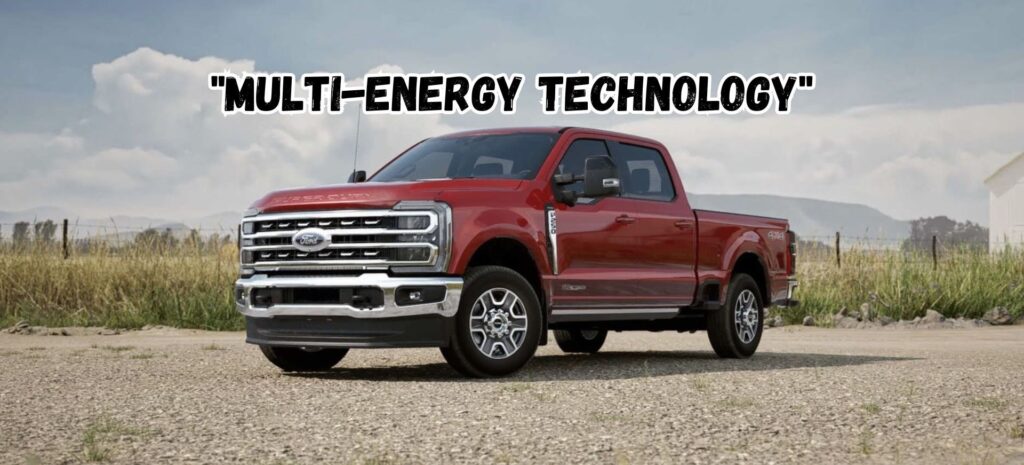Starting in 2026, the F-Series Super Duty will be produced in Canada. The plant in question is the Oakville Assembly Plant, where Ford aims to increase annual production capacity up to 100,000 units. At press time, the heavy-duty trucks are produced at the automaker’s Kentucky Truck Plant and Ohio Assembly Plant.
Both are operating at full capacity. Aside from increased demand, Dearborn’s favorite son also confirmed that “we will be introducing multi-energy technology in our next generation of Super Duty trucks.” With the emphasis on the plural of trucks, this multi-energy technology will go beyond the F-250. The question is, will it stop at the F-350 or will it go all the way to the F-550?
Unfortunately, that’s not clear as of July 2024. Nor is multi-energy technology, meaning combustion and electric assist, or multiple levels of electrification. Remember the Hyundai Ioniq? The Prius-like hatchback came in hybrid, plug-in hybrid, and all-electric variants.
Ford’s half-ton pickup is available with a choice of internal combustion engine, self-charging hybrid and zero-emission powertrains — the hybrid is called PowerBoost, while Lightning is the name for the all-electric option — so can Ford Motor Company sell an electric Super Duty with current battery technology?
Only time will tell, but a hybrid is definitely a possibility. As with the F-150 PowerBoost, expect a small high-voltage battery powering a small electric motor inside the 10R80 automatic transmission. Super Duty trucks will use the heavier-duty 10R, with the most capable of those being the 10R140. The 140 means 1,400 Newton-meters (1,033 pound-feet) of torque, but this transmission is more than capable of handling the 1,627 Newton-meters (1,200 pound-feet) that the 6.7-liter Power Stroke produces.
Photo: Ford
It makes sense to sandwich an electric motor between the 10R140 and the 7.3-liter Godzilla pushrod V8 or its lesser variants. The motor captures regenerative braking energy to recharge the high-voltage battery. In the F-150 PowerBoost, named after the 3.5-liter EcoBoost, the liquid-cooled battery is rated at 1.5 kWh. It’s mounted between the frame rails under the cargo floor.
With rear-wheel drive as the default, the F-150 PowerBoost achieved a fuel economy of 25 miles per gallon (9.4 liters per 100 kilometers) on the combined test cycle. However, the hybrid setup gets all-wheel drive starting with the 2023 model year. In that configuration, it’s rated at 23 miles per gallon (10.2 liters per 100 kilometers).
So how much difference does the hybrid make over just the 3.5-liter EcoBoost? That’s 4.0 miles per gallon, or 19 mpg, which translates to 12.4 liters per 100 kph in metric terms. That’s a pretty big difference, and it’s most noticeable in your annual fuel costs.
Because the F-Series Super Duty comes in two trim levels, heavy duty and medium duty, there are no EPA fuel economy ratings.

